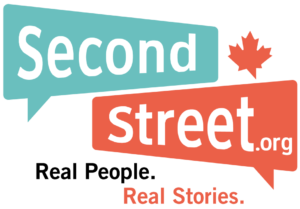TRUE NORTH COLUMN – School choice a refuge for parents fed up with public system

Canadians live in a vast, diverse country with a wide set of values and opinions.
So, it shouldn’t be surprising that many are upset with what’s being taught in public schools and other school activities.
Consider that a recent poll commissioned by SecondStreet.org found that 51% of Canadians think the public school system has gone in the wrong direction over the last 20 years. This is a significant increase – in late 2020, that number stood at just 32%.
Why are people so unhappy with the system?
Well, the poll didn’t delve into what’s driving these concerns, but if one follows what’s been going on in Canada’s public schools, it’s not hard to see why.
There are countless examples of sensitive, controversial, and politically-charged topics being taught to children across Canada as undisputed facts.
Take for instance, the Calgary school that taught kids that saying “All Lives Matter” is inappropriate, or that climate activist Greta Thunberg and Michelle Obama are “great speakers.” No matter your opinion on those individuals or that statement, it’s clear that politically biased content was taught to children. Imagine how left-leaning parents would react if their child was taught that Jordan Peterson or Ben Shapiro were “great speakers.”
Also consider gender issues and sexual matters in public schools.
By now, you’ve probably seen the photos of the teacher wearing enormous fake breasts at a school in Oakville, Ontario. In Lumsden, Saskatchewan, grade 9 students were handed cards explaining graphic sexual acts. In Castlegar, British Columbia, a teacher had a drag queen read to her elementary school class through Zoom. These are just a few examples of controversial activities in public schools as of late.
Many schools are also training their teachers to have an explicit bias against white people. Take, for instance, the Toronto District School Board. Last year, it held a workshop for teachers titled ‘Teaching math while White: An abolitionist approach to dismantling racism in the math classroom.’ Should critical race theory really play a part in teaching kids algebra?
With all of this focus on pushing controversial topics, it seems that a focus on math, reading, writing, history, and other important topics has fallen by the wayside. Test scores are dropping.
Any or all of these reasons may be contributing to the growing dissatisfaction with the public school system. So, how can it be fixed?
For one, governments could give parents more choice.
Alberta’s charter school model is an example worth copying. In that province, a number of publicly funded, non-profit schools cater to different educational priorities. There are schools that focus more on science and math, some that have a focus on fine arts, and even some based around Indigenous teachings.
Best of all for parents, these schools do not charge tuition. Is it any surprise they have long waiting lists for enrollment?
Expanding the number of these schools in Alberta, and introducing the idea to other provinces, can only be a good thing. Doing so would give parents more choice. For example, a parent with a child who’s passionate about the trades would certainly appreciate a school where they could dedicate more time to learning about carpentry, welding or plumbing instead of critical race theory and gender ideology.
Governments could also consider charter schools for faith-based groups. This could help address situations where school content or activities are in direct conflict with religious worldviews. For example, there have been at least two cases in Canada this year where public school teachers berated Muslim students for not participating in pride events. If religious families aren’t welcome in public schools, charter schools could be a potential solution.
Even non-religious parents who disagree with controversial gender and racial agendas could benefit from a charter school that vows not to infuse these ideas into its curriculum.
It’s clear that Canada’s public schools are heading in the wrong direction. While improving the public system itself is a goal worth pursuing, giving parents more choice is equally important. After all, parents should have the final say when it comes to raising their own children.
Dom Lucyk is the Communications Director with SecondStreet.org, a public policy think tank.
This column was published in True North on August 5, 2023.
You can help us continue to research and tell stories about this issue by making a donation or sharing this content with your friends. Be sure to sign up for our updates too!


